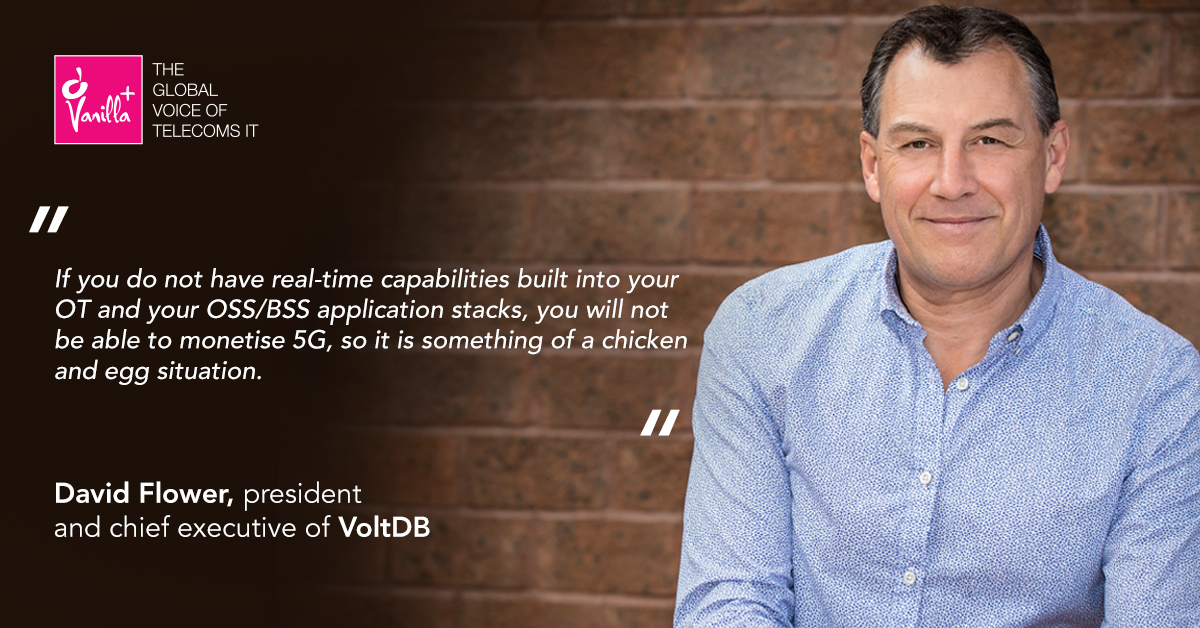With 5G rolling out across the world, communications service providers (CSPs) have invested heavily in their operational technology (OT). However, to generate a return and grow their market share, they need to invest in their IT to handle automation, low latency, services such as network slicing, and technologies such as machine learning and artificial intelligence (AI). To make matters more complex, this is not just a CSP challenge, David Flower, the president and chief executive of VoltDB, tells George Malim, the managing editor of VanillaPlus. Other organisations are already engaging with 5G, meaning that CSPs must keep up the pace in both their IT and OT transformations if they want to maximise success in the new era
George Malim: How is the arrival of 5G accelerating the convergence of OT and IT? What are the complexities of this that need to be addressed?
David Flower: We approach this from a slightly different angle to other organisations because we’re an underlying infrastructure technology provider, not an application provider. We’re in the world of supporting business support system (BSS) applications, for example, in the charging or policy side of CSP operations. This means we are always one or two steps removed from the end customer so a lot of what we learn is really through the conversations we have with partners and operators. Another difference is that not all of our clients are in telecoms even though they are starting to use 5G as an underlying delivery platform.
While we see that there is a lot of hype around 5G, the most common question we hear is how to monetise 5G which comes back to how OT and IT are converging and working together. You can’t have one without the other if ultimately you want to try to monetise these massive amounts of investment that are going into 5G. While the promise is there to unlock enormous revenues for operators and technology partners, there is also a recognition that investment is needed in the operational technology side, that core network environment, to actually build out what 5G is capable of delivering
There is also a recognition that you must match that by ensuring organisations update their IT infrastructure to support what is being invested in the OT side of the operation as well. From that perspective, if most of the investment has quite rightly gone into OT initially, you might think that investment into IT happens in a parallel process but in reality it doesn’t. Having said that, with enormous investments having been made in network builds, the next level of investment is to align IT with OT.
Most CSPs have been relying on ten-year-old architectures when it comes to BSS. In the last 18 months, we’ve seen a realisation, and in the last six months an aggressive realisation, that there is a need to move on from legacy technologies and enable IT infrastructure environments to match the capabilities of all those OT investments that have been made to date. One can’t operate without the other
GM: Is it 5G or IT advances that have changed the telecoms landscape?
DF: 5G is a completely new paradigm when it comes to the world of telecoms. We’re now talking about software-defined networks, edge processing, and network slicing and these things have never been possible before. They are opening up a whole new world of both pain and opportunity in the marketplace and the broader market is looking at this and starting to step into the traditional world of the CSP
REGISTER NOW to Continue reading this interview on page 9 inside VanillaPlus Magazine






